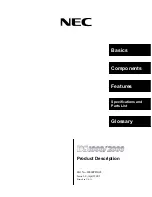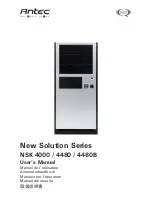Let’s face it, Icon
®
helmets look cool and you want to keep them that way. We’ve found the following methods work really well
to keep our helmets looking sharp and ready to roll. Remember, never use gas, pre-mix, carb cleaner, brake cleaner or any
other random unlabeled spray can lying around the garage. Chemicals and harsh solvents can break down the materials in your
helmet; it’s like using brake cleaner to polish your plastics—don’t do it!
EXTERIOR POLISHING
1. For gloss helmet finishes, use spray automotive wax that is
specifically designed for cars with a clear coat.
(Available at any automotive store.)
2. For matte finishes, you know better than to polish a matte
finish don’t you?
STORAGE
It is a good idea to protect your helmet if it is stored for a
period of time. Store your helmet inside the helmet bag we
have provided in a secure, dry place out of direct exposure
to sunlight.
INTERIOR CLEANING
1. Remove interior lining as shown in the section of this
info notice titled “Comfort Liner Removal and
Reassembly”.
2. Soak your interior in a mild solution of baby shampoo.
3. Rinse in clean water several times until all soap is gone.
4. Let interior air dry and replace accordingly.
* Never machine wash or dry your helmet interior.
ONE IMPACT RULE - ANY HELMET THAT HAS SUSTAINED AN IMPACT SHOULD BE REPLACED.
:
Helmets are designed to
absorb only one impact. The helmet is designed to absorb some shock by partial destruction of the shell and liner. After your
helmet has endured any impact, the impact absorption liner portion of your helmet will have dispersed the energy from that
impact, thus rendering the liner compacted and, therefore, compromised. This damage may not be visible. Even if there is no
VISIBLE damage to the shell, the helmet’s usefulness is expired after one impact. A helmet that has experienced an impact
should be destroyed and replaced, even if it is apparently undamaged.
HEARING
:
Wearing any helmet reduces the wearer’s ability to hear. A wearer needs to be aware of this audible reduction and
their surroundings. Not being aware this audible reduction may lead to an accident that could result in injury or death.
OBSOLESENCE AND HELMET DISPOSAL
:
A helmet has a limited lifespan in use and should be replaced when it shows obvious
signs of wear, e.g. change of fit, cracks, rust or fraying or other signs of normal “wear and tear” that can contribute to helmet
degradation.
REPLACEMENT RECOMMENDATION:
The five-year helmet replacement recommendation is based on a consensus of the
majority of helmet manufacturers. Glues, resins and other materials used in helmet production can affect liner materials over
time. Hair oils, body fluids and cosmetics, as well as normal “wear and tear” also contribute to helmet liner degradation.
Additionally, petroleum-based products present in cleaners, paints, fuels, and other commonly encountered materials may
break down materials used in the construction of many helmets, possibly compromising performance. Experience indicates
that helmet standards are revised every five years. This, coupled with advances in materials, designs and production methods
suggest that it is in the rider’s best interest to replace his/her every five years at a minimum. If you buy a new helmet, destroy
the old one to ensure it cannot be reused. Do not sell or give away your old helmet, even if it has not been damaged. Over time,
the protective layer in the helmet will adjust to the contours of your head. If someone else uses this helmet it will not provide
him or her with as much protection.
WAIVER AND RELEASE BY OWNER:
No personal protective equipment is able to safeguard against all injuries in the event
of an accident or fall from a motorcycle. No personal protective equipment can offer complete protection against impact or
abrasion as a result of an accident or fall from a motorcycle. Motorcycling is inherently dangerous in nature and use of this
helmet cannot prevent injury or death. Even a low speed accident may result in serious injury or death. When using this helmet,
the user assumes all risk associated with this activity, which may cause injury or death. The user hereby waives all claims
against Icon® Motosports (a division of Lemans Corporation), Lemans Corporation and J-TECH Corp. for death or injury to his
or her person and hereby covenants to not sue for any claims arising as a result of injury or death while using Icon Motosports
products
.
EXTERIOR CLEANING (GLOSS HELMETS)
1. Lay a warm, wet, cloth towel on the exterior of the helmet
for at least 5 minutes to soften dried on bugs. (Don’t skip
this step!)
2. Using a fresh, wet, clean cloth and mild dish soap wipe
down the exterior to get rid of road grime and softened
bug guts.
3. Use another fresh dry cloth towel to dry the helmet and get
rid of any water spots.
SHIELD CLEANING
Your helmet is equipped with a scratch resistant fog free
shield.
Common household cleaners such as glass cleaners,
surface cleaners, and furniture polishes, can leave behind
unwanted residues, or in some extreme cases damage the
shield itself. Use no cleaners or detergents on the inside
of your shield.
Using anything other than a clean soft cloth,
micro fiber cloth, or the bag supplied with your helmet, will
ruin or reduce the effectiveness of the fog free coating.
It is our recommendation the same steps outlined for
cleaning the exterior of your helmet should be applied to
cleaning the exterior of your shield.
EXTERIOR CLEANING (RUBATONE™ HELMETS)
1. Lay a warm, wet, cloth towel on the exterior of the helmet for
at least 5 minutes to soften dried on bugs.
2. Remove the now softened bugs and road grime with a light
blotting action. For this use the soft part of your helmet bag
provided or a clean microfiber cloth.
* Never rub aggressively with anything on the Rubatone™ or you can
ruin the finish.
15
16
15
16
CARE AND CLEANING
ADVISORY
Summary of Contents for AIRFORM Series
Page 10: ......


















